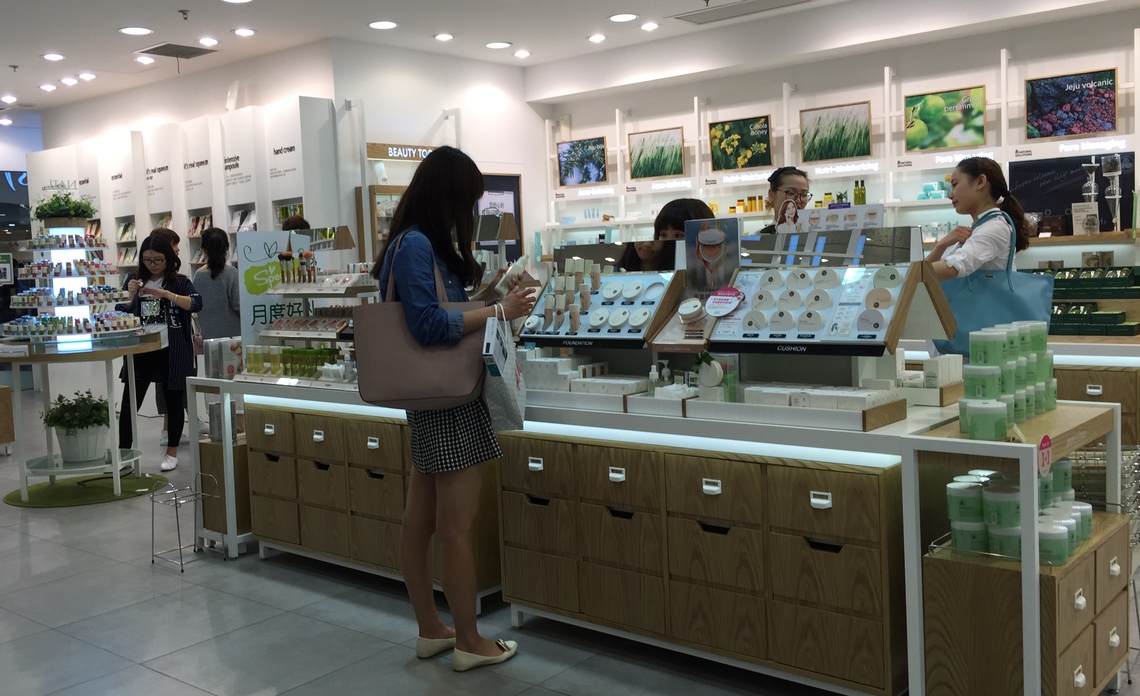China-Origin★Korean Cosmetics Brands Ride the Hallyu Wave to Rapid Growth
Riding the wave of the enduring Korean Wave boom, Korean brand cosmetics are significantly expanding their market share in China. Their clever advertising strategies utilizing dramas and films, along with brand development appealing to a wide range of generations, have captured the hearts of young consumers. This was reported by NNA, which distributes Asian economic information.
According to the portal site China.org.cn, South Korea accounted for 19.1% of overseas cosmetics imported by China in the first quarter of this year, making it the second-largest supplier after France (33.6%). This marks a significant leap from its fourth-place ranking in 2014, surpassing both Japan and the United States.
One key growth factor is its clever advertising strategy leveraging the Korean Wave boom among young consumers born in the 1980s and 1990s, known as the "post-80s" and "post-90s" generations.
In China, where regulations on video streaming services like dramas and movies are relatively lax, the sales-boosting effect of featuring celebrities in cosmetics ads is significant. For example, the moisturizing cream from Amorepacific's "Hanyul" brand, featured in the drama "My Love from the Star" starring popular Korean actress Jeon Ji-hyun, saw its monthly sales jump to over five times the previous level after the drama aired. A Chinese woman in her early 20s working for a Japanese company, who frequently purchases Korean cosmetics, is a huge fan of Korean dramas. "Major video streaming sites like Youku Tudou have a huge selection of Korean dramas, and I check them every time," she says. She adds, "Korean cosmetics seem to catch my eye easily, probably because they use celebrities who are well-known in China for their promotions."
Amorepacific, Korea's largest cosmetics manufacturer, saw its 2014 sales in China reach 467.3 billion won (approximately 52 billion yen), a 44% increase from the previous year. Its average growth rate over the last decade stands at a remarkable 47%, rapidly expanding its market share. Its premium herbal line "Sulwhasoo" and youth-oriented "Laneige" are sold in department stores; its budget lines "Innisfree" and "Etude House" focus on commercial facilities like shopping centers; and "Ry" is available at Hong Kong-based drugstore chain "Watsons." By deploying brands tailored to the distinct characteristics of each channel women use, it captures demand across a broad demographic.
According to the news site Dongfang Wang, the average spending per purchase on cosmetics by Chinese women is only 20 to 30 yuan (approximately 400 to 600 yen), significantly below the global average of 35 to 70 dollars (approximately 4,300 to 8,500 yen). However, the user base is expected to expand in the future due to the diversification of the cosmetics market, driven by the younger age group using cosmetics and the growing demand for anti-aging products. For cosmetics manufacturers, the key to expanding sales will be how effectively they can tap into this latent demand.

Was this article helpful?